The Disgusting Food Museum
- Tags:
 What to see Malmö,
Malmö,
Sweden
What to see Malmö,
Malmö,
Sweden
- Website: https://disgustingfoodmuseum.com/
The Disgusting Food Museum: not for the faint-hearted!
If you’ve been keeping up with my ‘Scandinavia Diaries’ series, you’ll know that I was recently in Malmö, a small city on the southwestern coast of Sweden. I had a fantastic time visiting this place (read all about it here), but perhaps my favourite thing I did that day was visiting the Disgusting Food Museum. Here, I not only got to see all sorts of stomach-churning delicacies from across the world, but also I had the chance to taste some of them for myself! Needless to say I won’t be trying those foods again, if I can help it…
In this article, I’m going to be telling you all about my experience of this place, and explaining why I loved it so much, despite wanting to throw up half the time I was there. Faint-hearted readers, now’s the time to click off. Feeling brave? Take some deep breaths, and read on!
Arriving at the museum
Eager as we were to get there, my brother and I had a rather difficult time actually finding the Disgusting Food Museum. We wandered all round the block – through various estates, and past many a half-timbered building – and were just about to give up when we realised that it was actually located inside a shopping centre (Caroli Shopping Mall). We paid the rather hefty entrance fee of 150kr (around £12.75, but well worth it in my opinion), and were given sick bags instead of tickets! Luckily, both remained unused.

The exhibits
There must have been at least fifty different disgusting foods and beverages on display in the museum, each held in a glass box, with an informative label attached to it. Among these were maggot-infested cheese from Sardinia, fermented horse milk from Russia, mouse wine from China, and stink bugs from Zimbabwe and South Africa. Even the most off-putting exhibits were supposed to have their hidden benefits: bull’s penis, for example, was said to be a great aphrodisiac.

Some items also had glass jars next to them, which contained their revolting stench. As might be expected, the smelly cheeses were particularly nauseating. Durian fruit, however – which is so pungent that it is banned on public transport in many Asian countries – had a rather inoffensive odour, in my opinion.
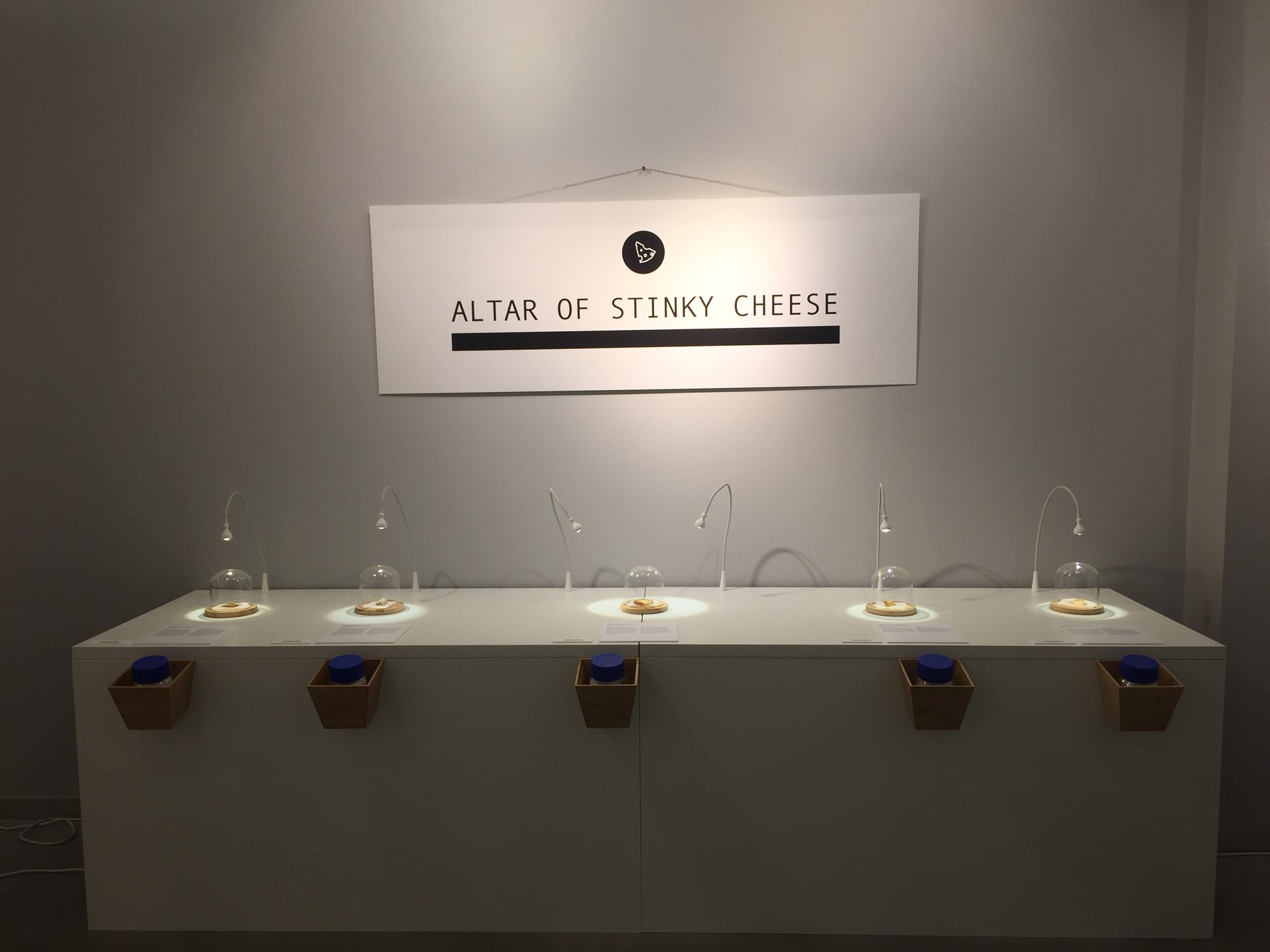
In addition to these display-cases, the museum also had a photo booth tucked away in its back room, which printed free polaroids. I won’t spoil the surprise, just in case some of you fancy visiting this place, but I’ll just say that there was no need to fake a disgusted face while you were having your picture taken… Also in this section was a trolley full of books on food and the science of repulsion. I had to note down quite a lot of their names, as these are both topics that fascinate me.
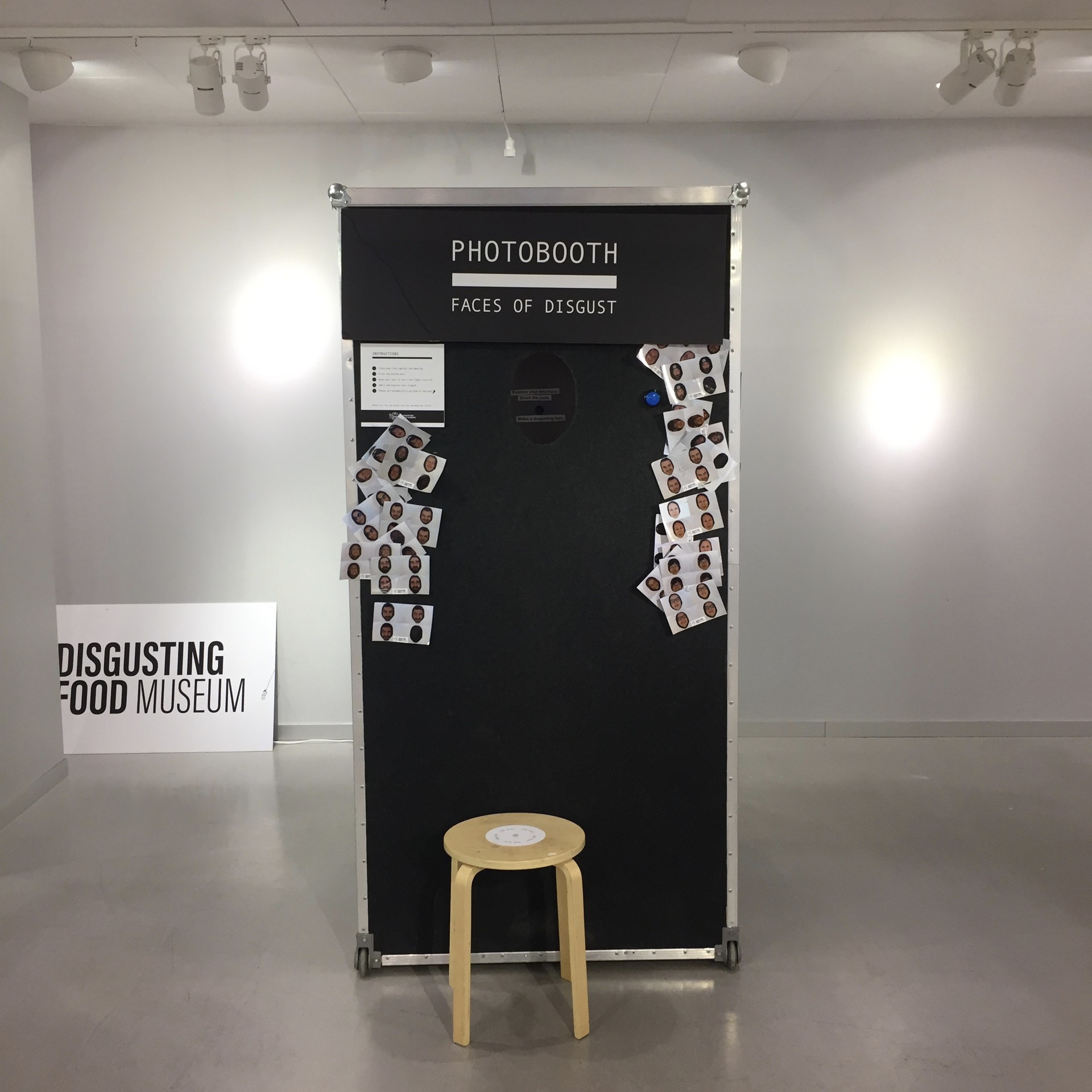
The tasting bar
And then, we moved on to the most daunting part of the visit: the session at the tasting bar. Hanging on the wall next to it was a sign stating how many days had passed since the last visitor had vomited: ‘1’, it read. We’d heard a woman retching just before we went over, but apparently she’d just about managed to keep her food down.
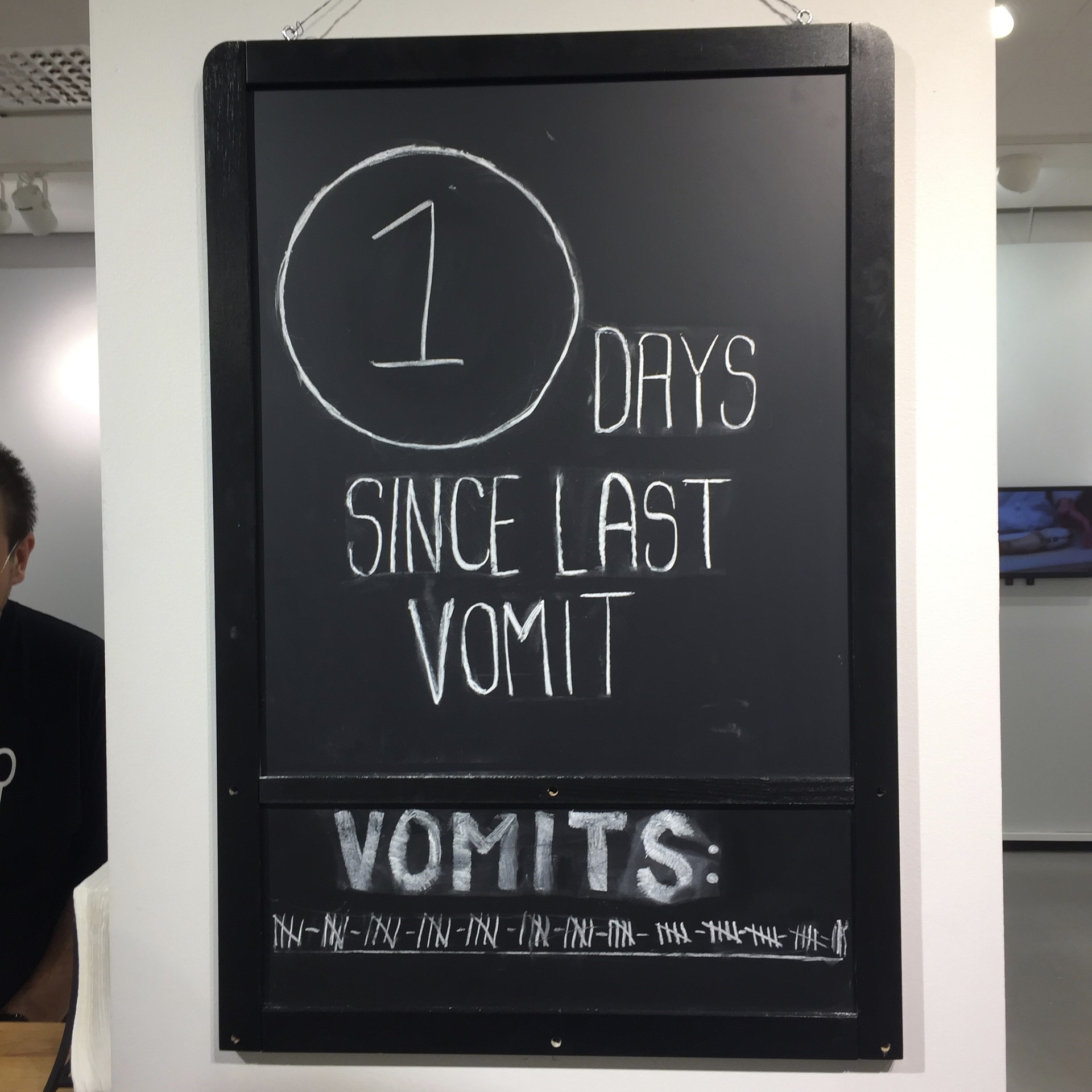
A lovely man led us through the various delicacies, warning us before we started that they were going to get progressively worse. From dung beetles, to salted liquorice, to sauerkraut juice, we had quite the feast, but the only thing that really got me was a goat’s cheese. Normally, I love the stuff, but this particularly one (su callu) was made using the milk-filled stomach of a kid, and had an acidic taste similar to vomit. Luckily, I just about managed to keep it together, and, after trying a speck of some very hot chilli, I was rewarded with a generous scoop of marshmallow creme.
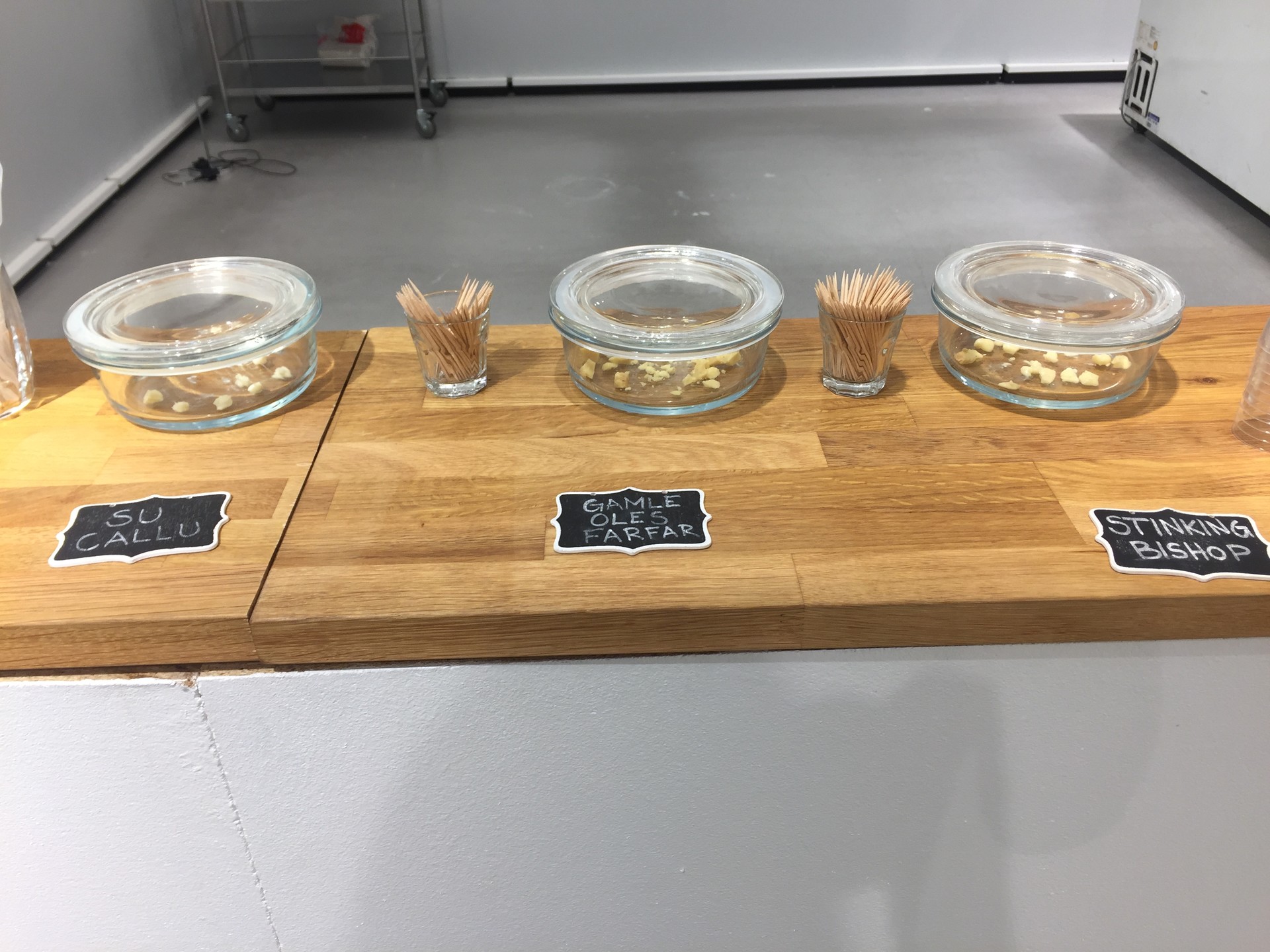
The meaning behind the museum
I had a whale of a time discovering the world’s least palatable foods, but what I liked most about the museum was the intentions of its founders. For one thing, we were, of course, encouraged to get out of our comfort zones and try something new. It’s all very well saying that something looks and sounds disgusting, but if you’ve never tasted it, how can you know for certain? I shuddered at the thought of eating crickets, for example, but ended up finding them rather nice and crispy.
This institution, then, encourages people to broaden their horizons, and give unfamiliar foods a chance. My brother and I were rather surprised to see things like gummy sweets and Pop-Tarts among the items on display, but of course to some people in other countries, the mere concept of these delicacies must seem unthinkable, just as some of their favourite snacks seem bizarre to us. It’s all relative, and there is so much we can teach each other, if we all just agree to open our minds a bit.
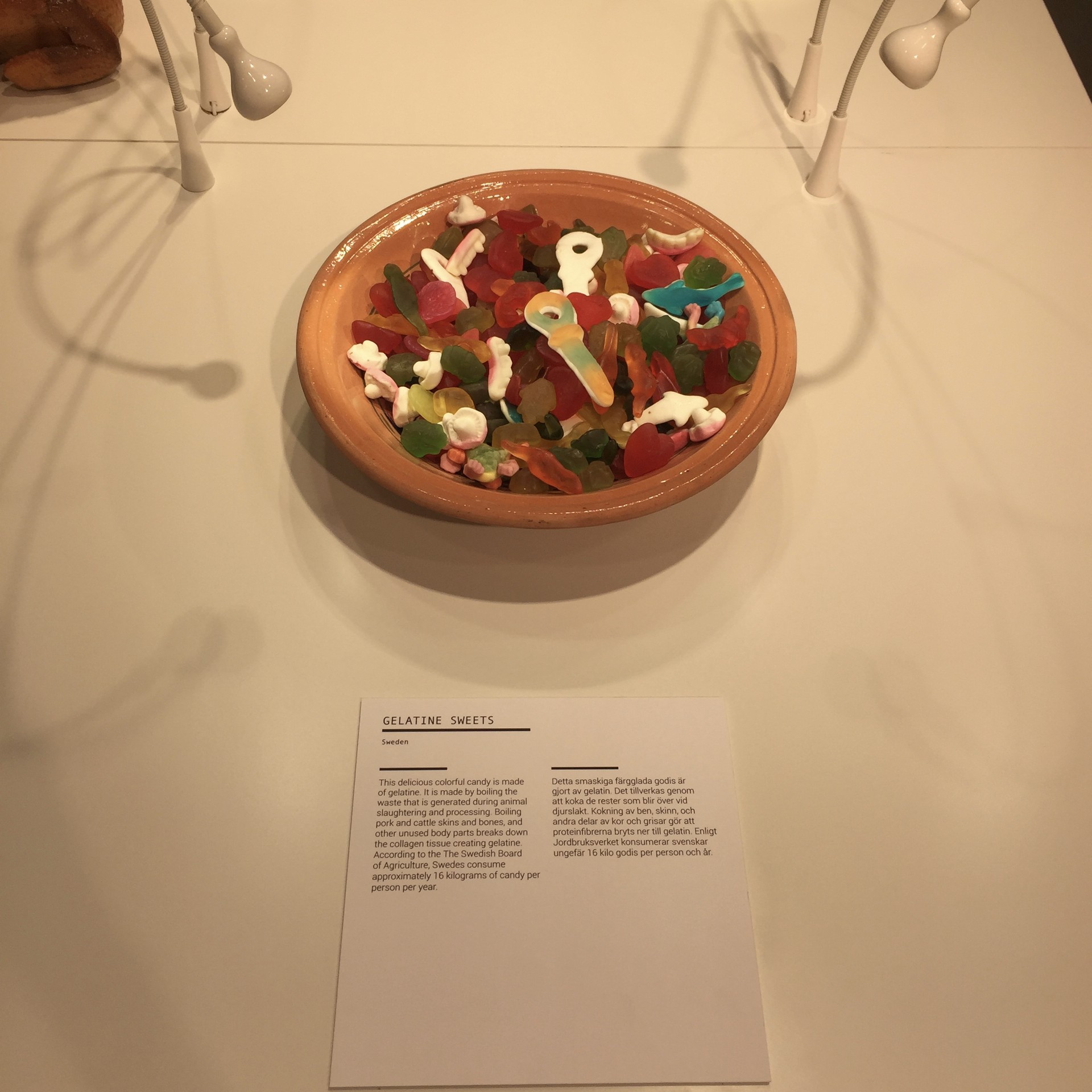
I also found the museum’s take on meat very interesting. At some points, it seemed as if they were almost trying to discourage the consumption of animal products all together. One label, for example, suggested that we ought to be resorting to lab-grown foods, not least because the meat industry is doing such damage to our environment.
However, what really struck me was the way in which visitors were encouraged to contemplate their own dietary choices. Both pork and dog meat were on display, but of course, I would only have expected to see the latter there. Why? Because the former isn’t in the least bit foreign to me. I’ve always wondered why we have this unspoken hierarchy of animals: why we English omnivores, for example, eat chickens without thinking twice, but wouldn’t dream of cooking up a guinea pig. I find it almost hypocritical that one kind of meat might be considered more acceptable to consume than another, and yet I am guilty of thinking in this way, myself.
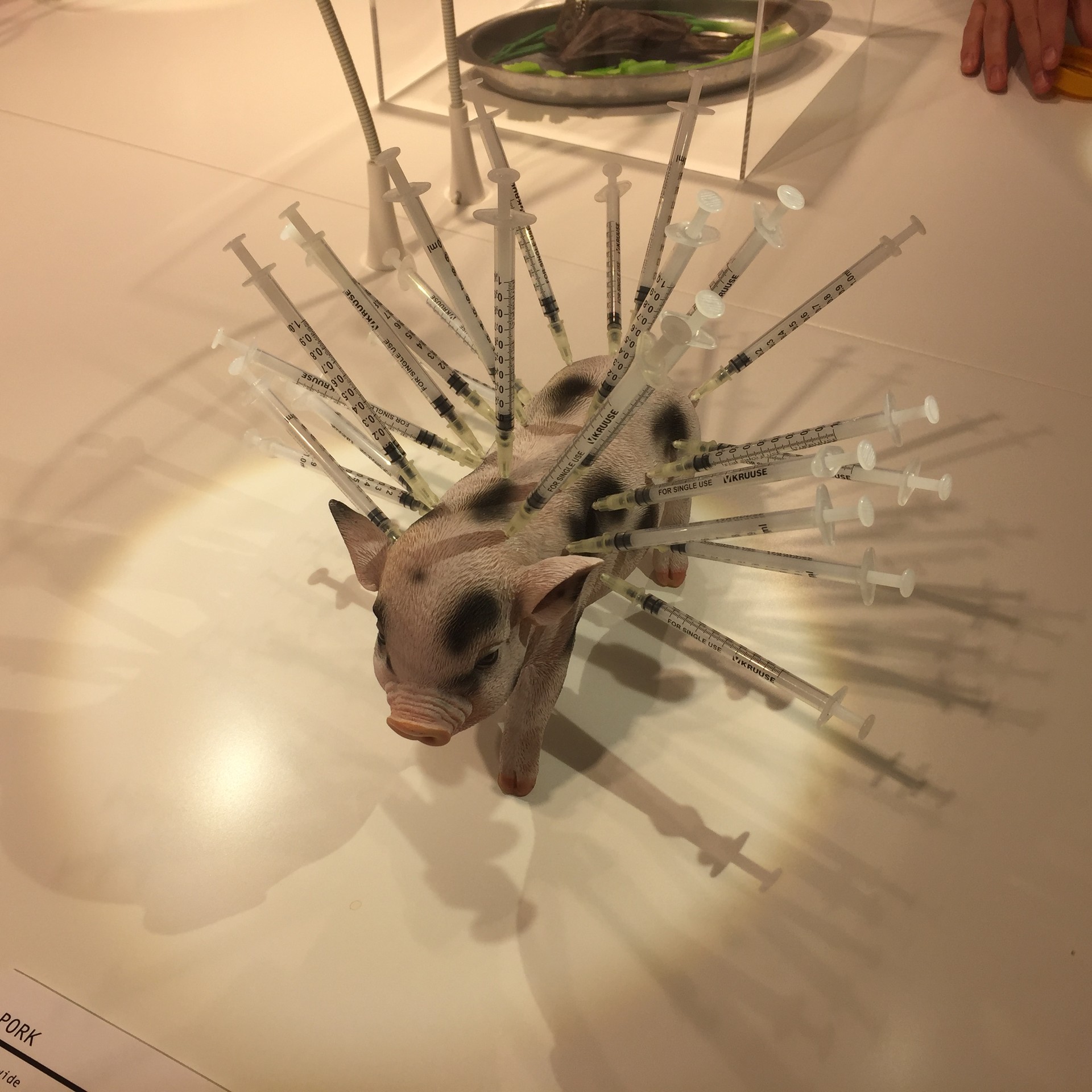
I don’t know if I’ll be changing the way I eat dramatically after visiting the Disgusting Food Museum, but there is one delicacy I definitely won’t be tucking into again: foie gras. I love the taste of this stuff – it’s rich, creamy, and melt-in-the-mouth – but until the other day, I was pretty ignorant about how it was produced. I knew the ducks and geese used to make it weren’t treated brilliantly, but it wasn’t until I saw a video, at the museum, of these creatures being force-fed that I realised the full extent of this particular industry’s inhumanity. To say I was appalled would be quite the understatement!
Why you should visit this place
This museum was, then, as thought-provoking as it was amusing, and if you’re ever in Malmö – or anywhere in the Skåne county – I would highly encourage you to pay a visit. Your mind will be opened in ways you wouldn’t have imagined, and you’ll leave with many a moral dilemma to contemplate. On top of this, you’ll be able to boast to all your friends about the disgusting foods you’ve managed to stomach (or not), and perhaps, like me, you’ll find that you actually like some of them! Book your tickets today, and give your taste buds an unforgettable experience.
Photo gallery
Content available in other languages
Rate and comment about this place!
Do you know The Disgusting Food Museum? Share your opinion about this place.























